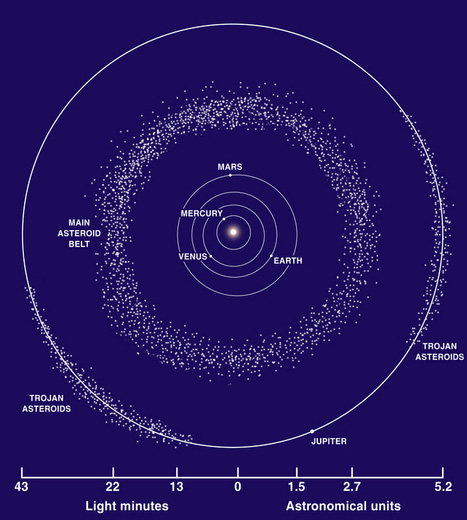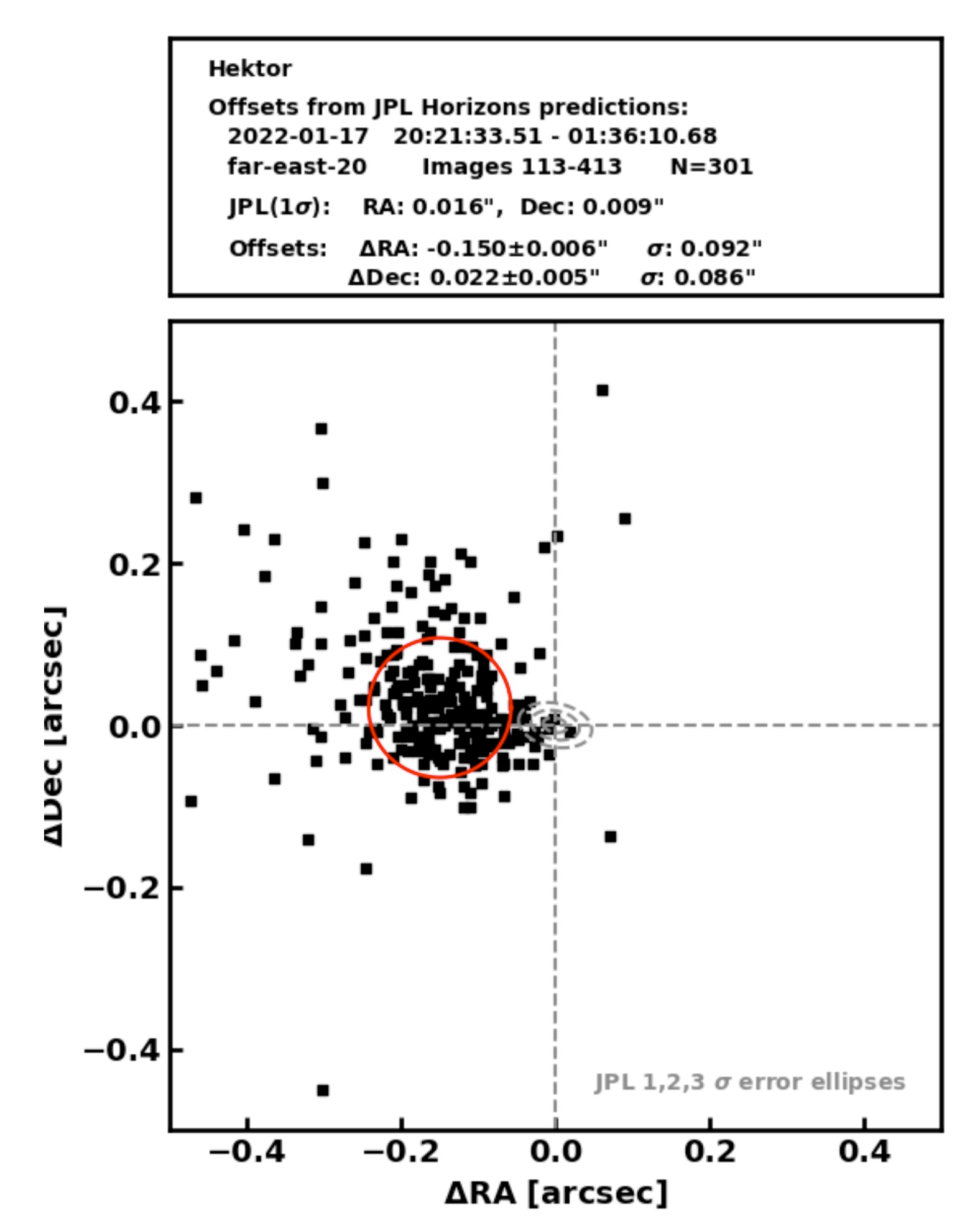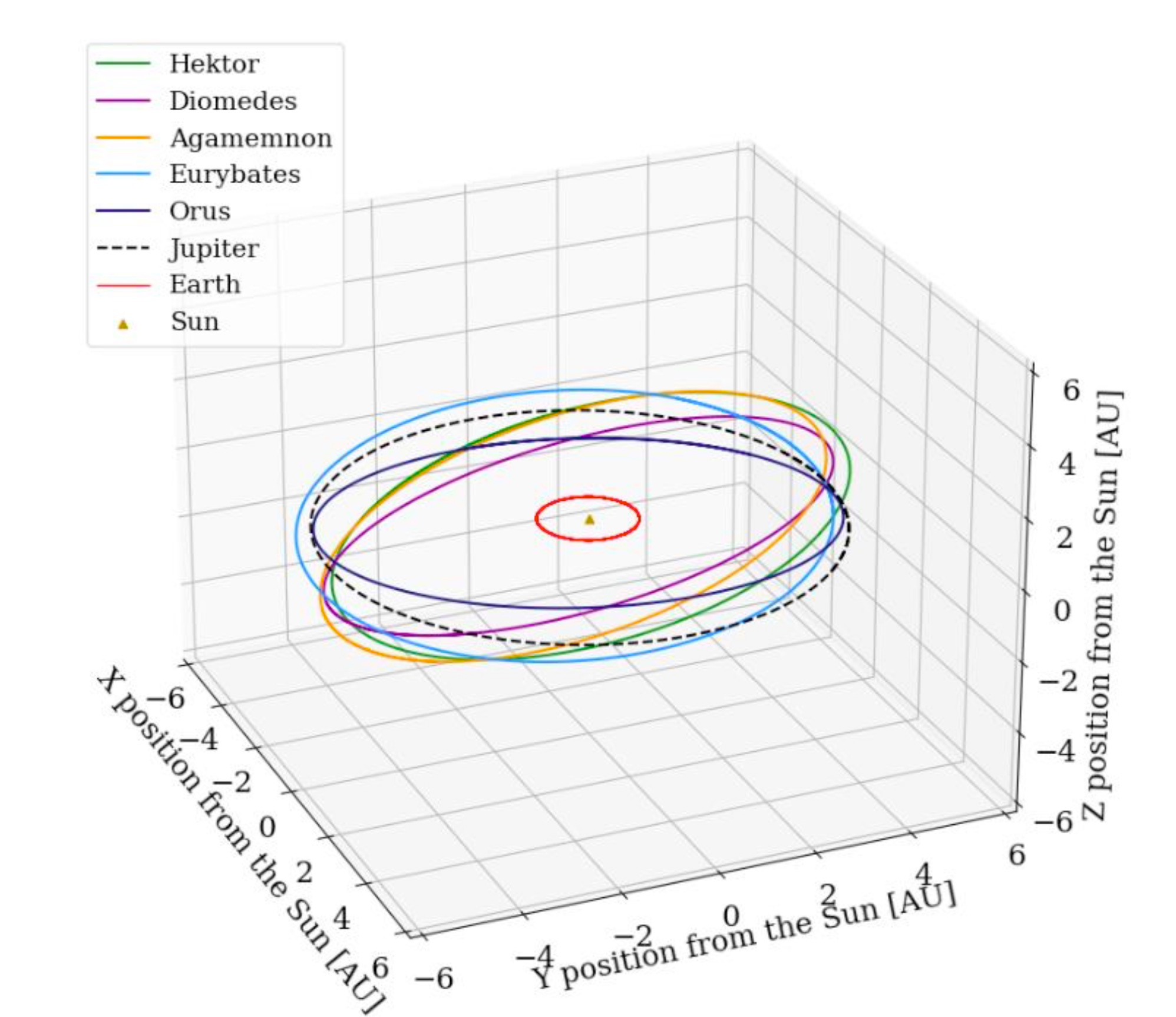 |
Department of Physics | AstroLab |
The Orbits of Trojan Asteroids
Apart from the major planets, the Solar System contains a large number of smaller bodies. The asteroids (i.e. the minor planets) are the small rocky objects that are found mainly between the orbits of Mars and Jupiter, e.g. the main-belt. The Trojan asteroids orbit the Sun in the vicinity of one of the Lagrangian points of Jupiter's orbit. These are considerably fainter than the main-belt asteroids and hence are more difficult to study. To study the Trojans in detail, the NASA Lucy mission was launced in 2021, and is set to fly-by five Trojans between 2027 and 2033.

The aim of the project is to independently determine the orbits of a sample of Trojan asteroids by making a series of positional measurements. This is achieved by measuring the asteroid's position on a CCD image relative to that of the stars. Trojan asteroids typically move about 5 arcmin per 24 hours. By tracking an asteroid over the term its orbit can be well determined. The goal will be to obtain about 10 observations per asteroid.
The main-belt asteroid page gives an example of type of results that can be obtained.
By reference to the UCAC4 or URAT1 star catalog astrometry measurements can be made with uncertainties of better than 0.1 arcsec. The plot below compares the measured astrometric positions with the asteroid positions for Trojan Hektor predicted from the JPL Horizons On-line Ephemeris. JPL's formal +/− 1, 2, 3 standard-deviation uncertainties are showed as error ellipses; these are described as "optimistic" (see Horizons Manual).

Having measured the positions of a set of Trojans over a few week period, the orbital parameters (and their uncertainties) can be derived and a 3D model for their orbits constructed. The figure below shows the heliocentric view of the orbits of five Trojan asteroids studied in 2020. The scale is in AU. With a 3D model, the uncertainty in the position as a function of time can be calculated. This has implications for missions to asteroids. With the orbital properties constrained, one of the goals of the project is to test how a mission, such as Lucy would be executed given the orbital uncertainties derived.

Project Details Project References
| Back to the AstroLab Home Page | jrl | 2020-Jun-17 12:44:47 UTC |